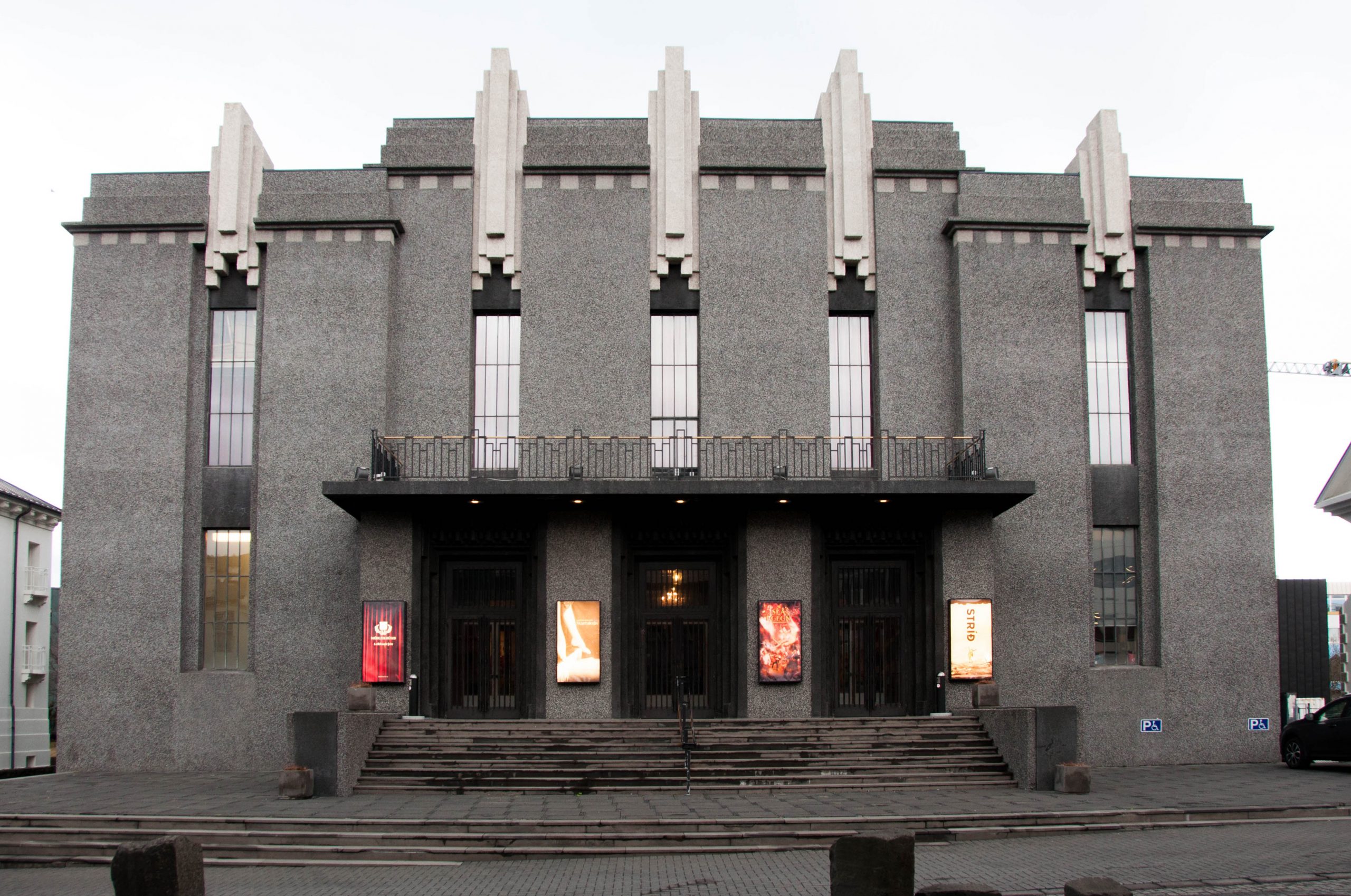Icelandic Concrete Surfaces: Guðjón Samúelsson’s Steining (1930–50)
Sofia Nannini

The National Theatre of Iceland. Image credits: @ Sofia Nannini, 2019
Abstract
In 1939, Iceland’s State Architect Guðjón Samúelsson (1887–1950) filed a patent for the “Improvements in or relating to Treating the Surfaces of Buildings and other Structures, particularly of Concrete”. Known as steining in Icelandic, the technique had already been used in Reykjavík for a few years, developed by local builders. This Icelandic version of pebbledash was to cover most concrete surfaces of Reykjavík until the late 1950s. The technique consisted in the application of a layer of stone fragments on a thin layer of cement mortar. Steining could hide the inaccuracies of concrete surfaces, and it was also a protection against the cold climate. It had visual outcomes: the use of local aggregates such as quartz and obsidian generated a concrete polychromy that spanned from darker to lighter shades; also, such fragments became an architectural mirror of the Icelandic geology and a built ode to the island’s natural landscape.
Nannini, S., “Icelandic Concrete Surfaces. Guðjón Samúelsson’s Steining (1930–50)”. In Iron, Steel and Buildings: the Proceedings of the Seventh Conference of the Construction History Society, edited by James W. P. Campbell, Nina Baker, Karey Draper, Michael Driver, Michael Heaton, Yiting Pan, Natcha Ruamsanitwong and David Yeomans. 541–52. Cambridge: The Construction History Society, 2020, https://www.arct.cam.ac.uk/research/history-theory/building-histories/the-seventh-annual-conference-of-the-construction-history-society/conference-proceedings/twentieth-century

